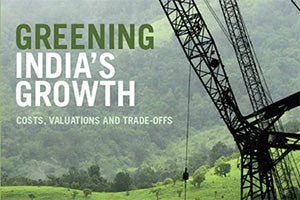
But rapid growth has been clouded by a degrading environment and a growing scarcity of natural resources. Today, India ranks 155th among 178 countries accounting for all measurable environmental indicators, and almost dead last in terms of air pollution. What’s more, more than half of the most polluted cities in the G-20 countries are in India. The deteriorating environment is taking its toll on the people’s health and productivity – and costing the economy a staggering Rs. 3.75 trillion each year (US$80 billion) - or 5.7 percent of GDP. So, does growth – so essential for development – have to come at the price of worsened air quality and other environmental degradation? Fortunately, India does not have to choose between growth and the environment.
Fortunately, a number of initiatives that look at cost-effective ways of reducing air pollution are at the planning stages or already underway. They range from measures that improve the efficiency of power plants and city transport systems, to those that enhance the effectiveness of the Clean Energy Fund , and establish state-level emission trading schemes. India is also on its way to becoming one of first countries to announce a green GDP.
But in order to meet the ambitious targets laid out by the 12th Five Year Plan between 2012 and 2017, there is an urgent need for these efforts to be backed by a comprehensive regulatory framework, a clear implementation plan, as well as the instruments and mechanisms to enforce it. It is time for all of us to act so that we and future generations can live in a cleaner, healthier, and more productive environment.
For More Information:
Read the Feature Story
Chat with me on World Bank Live


Join the Conversation